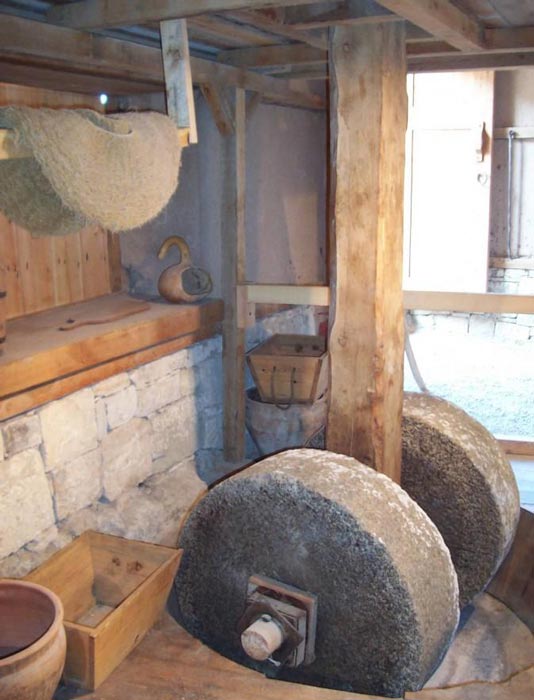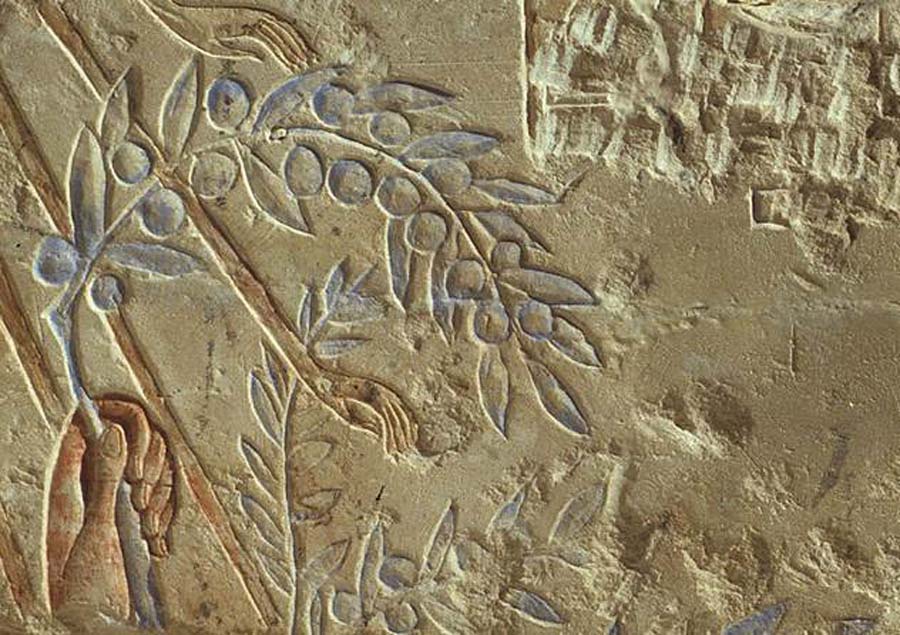Egyptian Olive Oil Production Method Recreated With Delicious Results!
Dr Emlyn Dodd, an archaeologist specializing in the study of ancient food and drink, has attempted to recreate the ancient and original method of Egyptian olive oil pressing called the torsion method, which was first documented 4,600-4,500 years ago. Dr Emlyn Dodd has recorded his lengthy observations on high-yield Egyptian olive oil production, and also demonstrates how important this kind of “experimental archaeology” can be in reconstructing the past.
From Crete to Israel to Egypt: The Egyptian Olive Oil Story
The ancient inhabitants of Crete already understood the “Mediterranean diet” and the value of olive oil nearly 10,000 years ago! And over time, olive oil rapidly became one of the major commodities of the ancient Mediterranean world. In fact, olive oil was key ingredient in international trade, cuisine, personal hygiene, rituals, medicine, fuel, and as an agent for making soaps and oil maps.
- Italy's Oldest Olive Oil Discovered in Peculiar Pot
- A Symbol of Peace, Victory, and Abundance: The Millennia-Old History of the Olive Tree
With the expansion of Greco-Roman culture in 8th century BC, the cosmetic use of olive oil became widespread in less than 100 years in most Hellenic city-states, despite the fact that it was very expensive. As Greek colonies were established in other parts of the Mediterranean, olive farming was now introduced to places like Spain (today Spain is the largest producer of olives in the world) and spread through the Roman Empire.

The Cretan Greeks were the first to produce olive oil in quantity. This is an ancient olive oil production workshop in Klazomenai, Ionia, in modern-day Turkey. (Public domain)
The civilizations that formed in and around the Mediterranean devoted a lot of their time and energies into crafting efficient methods to harvest and produce olive oil. Ancient agricultural texts meticulously describe what tools and equipment were required, how and where to grow olive trees, and other practical production details. There are also a few historical accounts available that discuss olive oil. For example, an account by Pliny the Elder mentions how critical olive oil was for the “outside” of the body, describing it as a “necessity.”
Dr. Emlyn Dodd, who is the Assistant Director of Archaeology at the British School at Rome and the brains behind the Egyptian olive oil technology recreation. In a wonderful article at The Conversation, he explains:
“The detail within these texts is staggering. It extends to precise instructions for creating olive oil as well recipes for various types. Combined with surviving iconography and art that depicts these processes, as well as the archaeological remains of oileries and olive groves, we can attempt to reconstruct these ancient commodities.”

It was the Egyptians who invented the super useful torsion bag technology for extracting oils including, of course, Egyptian olive oil. This fresco is from the tomb of Puimre in Thebes. Puimre was an ancient Egyptian noble and architect during the reign of Thutmose III in the New Kingdom, Amara period (1550–1069 BC). (Public domain)
Experimental Archaeology: Recreating the Torsion Bag Method
Dr Dodd wanted to understand the practicalities of the ancient high-tech Egyptian olive oil production technique. He shared his experience in a short video post on Twitter.
Dr Dodd reproduced the torsion bag press method by following the following steps, which he discusses in some detail in an article on Inside Hook. First, the olives are crushed and placed inside a permeable bag. Then, sticks are attached to both ends of the bag. Then the two sticks are twisted in opposite directions, which compresses the bag and extracts most of the olive oil. The torsion bag method has been recorded as early as 2600-2500 BC in the tomb of Nebemakhet, a king's son and a vizier during the 4th Dynasty (circa 2613-2494 BC).
Dr. Dodd writes, “Despite the fact that almost no archaeological evidence is known of actual olive oilry facilities in Pharaonic Egypt, with iconography providing the only real clues, this experiment clearly showed it is possible to press olives and produce oil using this frequently depicted method.”
- Oldest Soap Factory in the World Found, and It Was Vegan
- 7,500-year-old underwater village may have been oldest olive oil production center in the world
Though the Egyptians presumably employed this torsion method for the production of wine, Dr. Dodd wanted to test this technique for making olive oil, to see what quality could be produced. A simple cheesecloth was utilized as the bag for the process, and a basic mortar and pestle method from 5000 BC was used to crush the olives - a mixture of green and black olives from Australia - into a pulp.
The pulp was then placed in the cheesecloth sack and a variety of torsion methods were tested. Steady torsion pressure successfully provided a consistent and steady oil drip, without damaging the cloth. Different batches with a slight tweak in method and olives produced different results. Even Pliny acknowledged that the same batch of olives can give different results with different methods of production.
All in all, Dr Dodd made a very satisfactory batch of olive oil that tasted like fresh-pressed extra virgin oil, with a sharp and “bitey” flavor.
Top image: Recent research and experimentation has recreated the original "high-tech" way of Egyptian olive oil production. This stone panel at the Metropolitan Museum of Art (The Met), entitled "Clutching an Olive Branch," is from circa 1353–1323 BC in the New Kingdom, Amarna Period. Source: Metropolitan Museum of Art
By Sahir Pandey
References
Carroll, T. 2022. Archaeologists Made Olive Oil With an Ancient Egyptian Recipe. Available at: https://www.insidehook.com/daily_brief/food-and-drink/olive-oil-recipe-ancient-egypt.
Dodd, E. 2022. Remaking history: using Ancient Egyptian techniques, I made delicious olive oil at home – and you can too. Available at: https://theconversation.com/remaking-history-using-ancient-egyptian-techniques-i-made-delicious-olive-oil-at-home-and-you-can-too-180018.



















